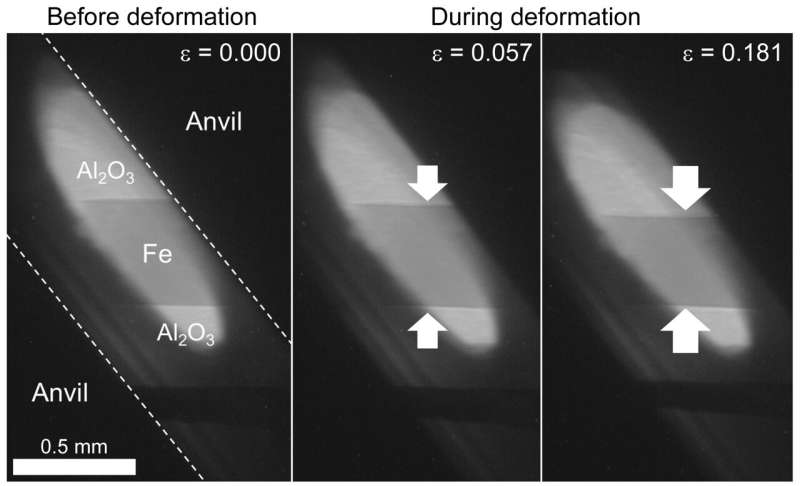This article has been reviewed according to Science X's editorial process and policies. Editors have highlighted the following attributes while ensuring the content's credibility:
fact-checked
peer-reviewed publication
proofread
Experimental constraints on the viscosity of the Earth's inner core

Although many geodynamical mechanisms have been proposed regarding the origin of the observed complex structure of Earth's inner core, no clear consensus has been reached. This is partly due to the lack of accurate knowledge of the viscosity in the inner core.
It has been discussed that the dominant mechanism of inner core dynamics depends on the inner core age and viscosity, and there are several candidate mechanisms including the equatorial inner core growth and plume convection models.
Since the inner core is considered to consist of hexagonal close-packed iron (hcp-iron), information of the viscosity of hcp-iron is a key to understanding the inner core dynamics. In a new study published in Journal of Geophysical Research: Solid Earth, researchers from Japan and the U.K. studied the rheology of hcp-iron based on high-pressure and high-temperature deformation experiments.
Uniaxial deformation experiments were carried out using a D111-type apparatus installed on a beamline NE7A at PF-AR, KEK, and a deformation-DIA apparatus installed on a beamline BL04B1 at SPring-8. Using a pre-sintered iron rod as a starting material, deformation experiments were carried out at pressures of 16.9–22.6 GPa and temperatures of 423–873 K where hcp-iron stably exists. The stress and strain of the sample during deformation were determined based on two-dimensional X-ray diffraction and X-radiography, respectively, using a monochromatized synchrotron X-ray.
The results showed that the dominant deformation mechanism in hcp-iron changes depending on the temperature, with power-law dislocation creep and low-temperature creep being most important above and below ~800 K, respectively. Based on extrapolation of these experimental results we estimate the inner core viscosity to be ≥ 1019 Pa, suggesting that the equatorial growth or translation mode model is the dominant geodynamical mechanism in the Earth's inner core.
More information: Yu Nishihara et al, Rheology of Hexagonal Close‐Packed (hcp) Iron, Journal of Geophysical Research: Solid Earth (2023). DOI: 10.1029/2022JB026165
Journal information: Journal of Geophysical Research: Solid Earth
Provided by Ehime University




















